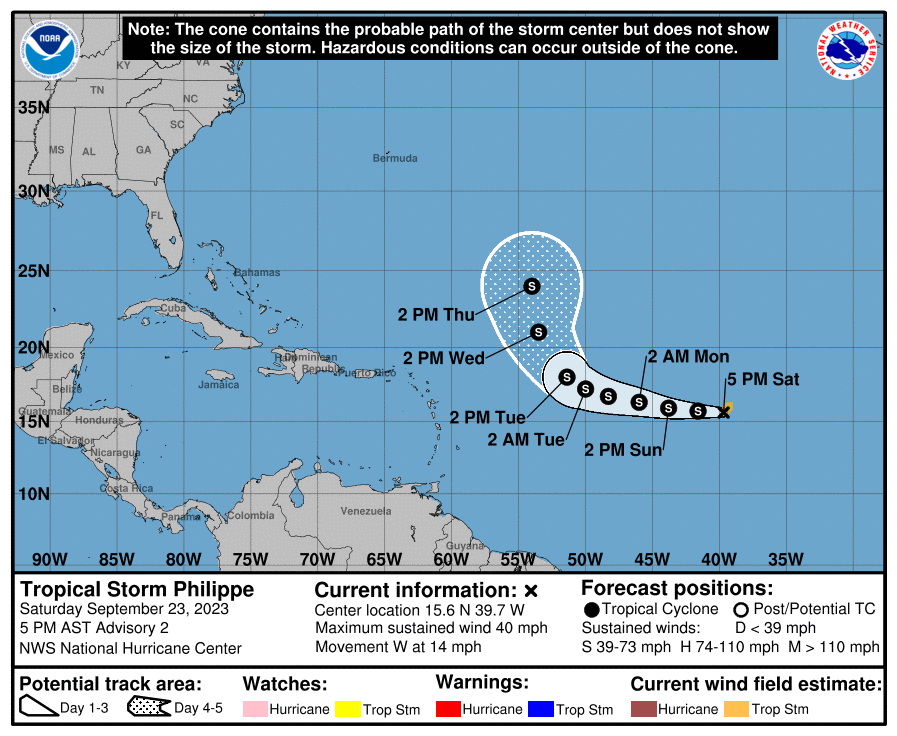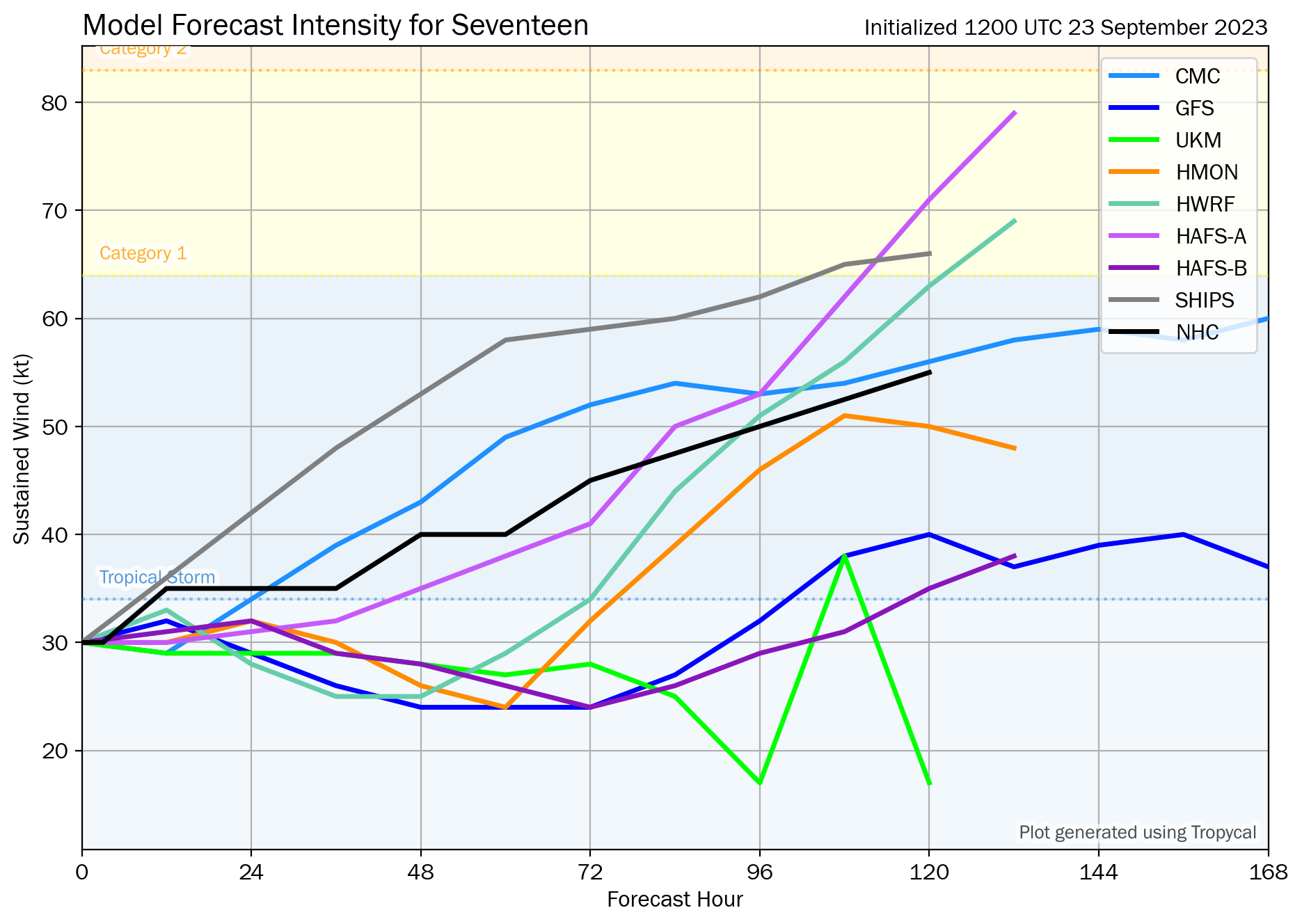
Background
Another Cabo Verde cyclone, Tropical Storm Philippe (formerly 90L and Tropical Depression Seventeen), has developed a well-defined center and deep convection and is now classified as a Tropical Storm. Does it have what it takes to reach hurricane strength?

Most forecast models had predicted Tropical Depression Seventeen to at least reach Tropical Storm strength (which it did), but for now only a few predicted a peak Hurricane strength. Notably, HAFS-A, one of the newer-generation basin-focused regional models, predicted a Category 1 strength in 5 days.

Resolution Criteria
Resolves YES if Tropical Storm Philippe reaches Category 1 hurricane strength (33–42 m/s,; 64–82 kt; 119–153 km/h; 74–95 mph) during its lifetime as a tropical cyclone.
Resolves NO if the conditions for YES are not satisfied before the tropical cyclone dissipates or becomes extratropical.
Will resolve based on NHC advisories.
I will not bet on this market, but I will put Ṁ200 in as subsidy.
🏅 Top traders
| # | Name | Total profit |
|---|---|---|
| 1 | Ṁ574 | |
| 2 | Ṁ281 | |
| 3 | Ṁ133 | |
| 4 | Ṁ104 | |
| 5 | Ṁ91 |